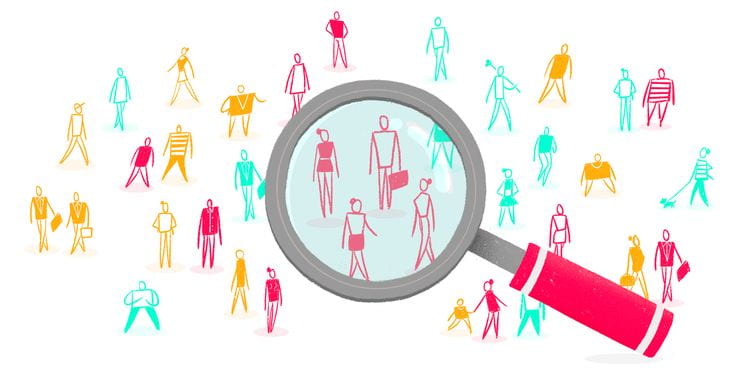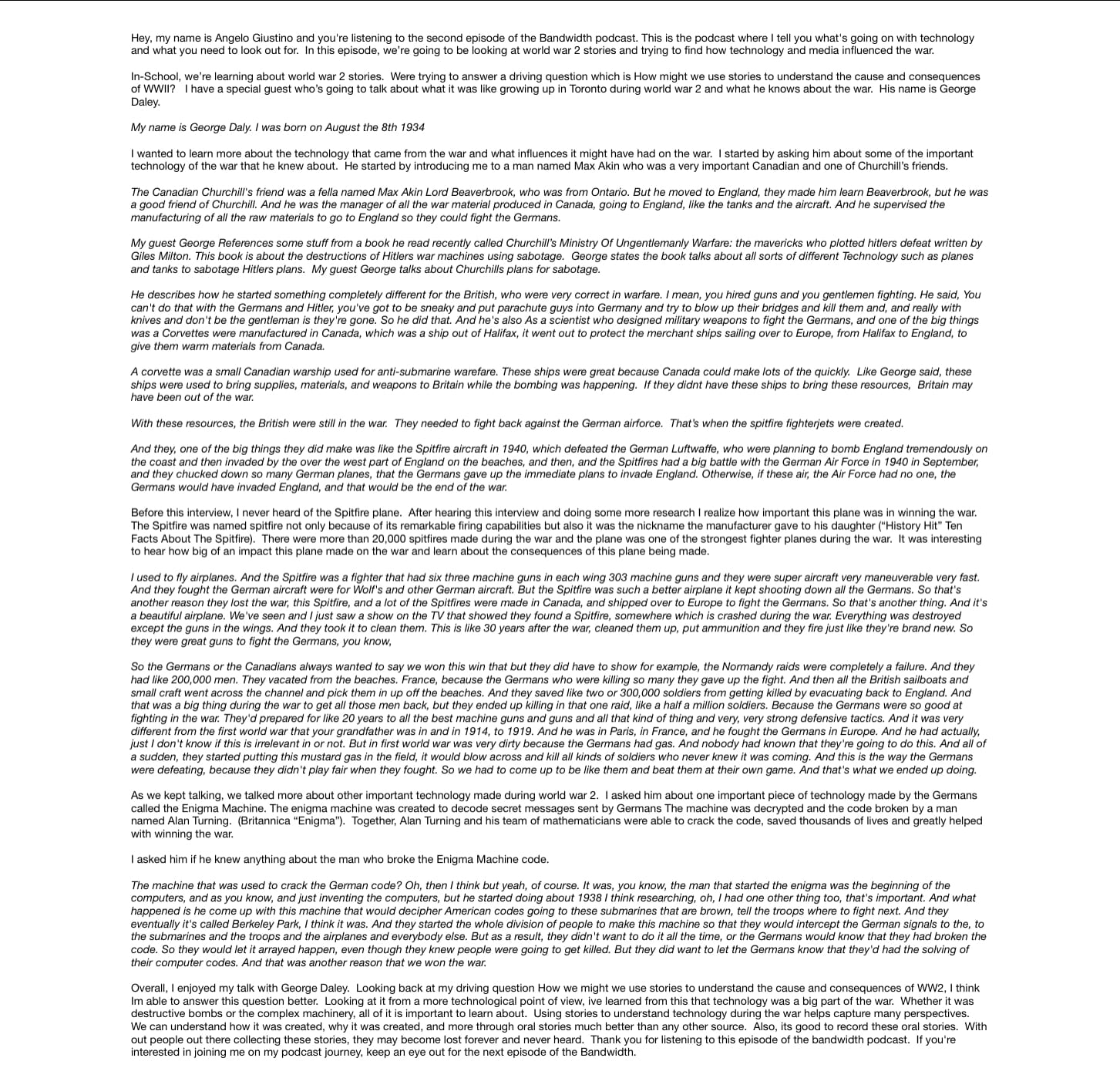World War 2 was the bloodiest battles in history. Millions of people died fighting and protecting their country and dozens of countries were involved. Although, with all of this fighting, new technology has been created. There have been so many different technologies created such as destructive bombs and big fighter jets that impacted the War in many different ways. I’m trying to look into those technologies for my next episode on the bandwidth podcast.
Were trying to understand the Second World War and the cause and consequences that it had. With my podcast episode, I was mainly focusing on the causes and consequences of technology and how it impacted the war. To do this, I had to find someone to tell me about the world war 2. For my podcast episode, I interviewed my grandfather who was a child living in Toronto while the war was happening. He was also very knowledgeable on the technology and war machines that came from the war. Before I’m able to tell you about my podcast episode, I have to discuss the milestones and steps that I thought were essential to get to my final product.
Milestone 2 – Analyze Cause And Consequences
We had to start by finding sources that not only relate to our topic but also relates to Cause and Consequence. For my podcast episode, I decided to focus on the technology of world war 2 and how it changed the war. I started by researching the technology that came out of the war. I found it very interesting reading about all of the amazing technology that came from the war. After I conducted all of my research and wrote down all my notes, I needed to get my story. I set up 10 questions to try and guide the story that my grandfather tells. The interview went well. We talked for about an hour and I was very surprised by how much he knew. He told me about certain war machines such as the spitfire was a plane made by the British that stopped a lot of the German’s air attacks.
With this milestone, I’ve better understood how to analyze information and find causes and consequences through text. With my research about technology, I found a lot of technology that causes certain sides to gain the upper hand during a battle. There was also technology I found that came out of the war that people still use today!
Milestone 4 – Responding To Text
After I completed my research, I started constructing the script for my podcast episode. This helped me better organize the story so that my podcast would flow smoothly. I created two different drafts for  my podcast. In my first draft, I was able to create all of the parts to a great story (beginning, middle, end) but I struggled with
my podcast. In my first draft, I was able to create all of the parts to a great story (beginning, middle, end) but I struggled with
organizing all of my ideas. Using the three-act structure, I was able to plot out all of the main points I wanted to add to my podcast episode. Below you can see both drafts and my three act structure.
During the creation of my script, I think I showed my ability well to respond to text. With my script, I was able to organize my ideas to construct a connection between myself and the information my interviewee discusses with me. Looking back at the research, in my podcast episode, I bring up the information I research when adding context to parts of the interview. I do this when I talk about the corvettes, spitfire, and enigma machine.
Milestone 5 – Using Evidence and Resources
After all of this work was completed I was able to start constructing my final podcast episode. I first had to record and chop up all of my audio. After I arranged and edited it, I spent the rest of the time mixing the audio. There were a few problems I encounter after I finished my first draft. I had to rerecord my audio due to it sounding different and some weirly cut audio but other than that my podcast was complete. Click here to listen to the podcast episode!
Through my podcast episode, I have shown that I can use evidence and resources. I have used diverse sources such as an interview and webpages as evidence to answer the driving question. I know that my sources are reliable because I have compared the information from the different resources to make sure it is accurate.
Milestone 6 – Global Collaborator
Finally, we were able to share our episodes to the world. Using a platform called anchor, we were able to upload our podcast to Spotify for everyone around the world to listen too. Along with that, I got to write an email back to my grandfather thanking him for letting me interview him.
I’ve shown how I have became a better global collaborator because I’ve shown that I can present and share my information to people around the world. I am using technology such as GarageBand, anchor, and Spotify to share my work. I’ve also show my knowledge for this competency with my email. I’m reaching out to my interviewee to share my work and hopefully get some feedback.
Overall, I have learned a lot about this project. Not only have I learned more about podcasting, but also about world war 2 and oral stories. I’ve realized the importance of collecting these stories so they don’t disappear forever. Hopefully, I can take what I’ve learned from this podcast about podcasting and interviewing to collect more oral stories in the future.







emaxwell
December 27, 2020 — 8:40 pm
Your episode makes a great conclusion Angelo about not only the content you were looking at, but the importance of oral storytelling. Great job in taking us through your steps in this project and connecting your work to the competencies!